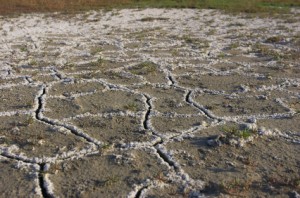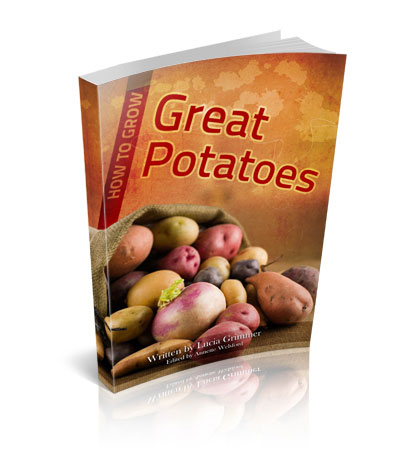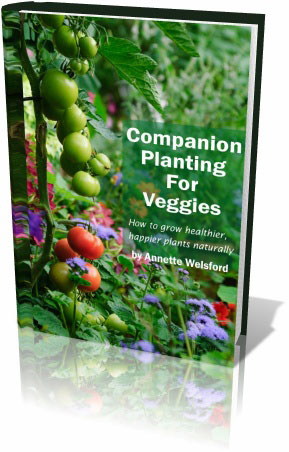The Effect of Flooding in Soils – Part 4
Managing Flood Affected Soils
Following on from previous articles about the effects of flooding on your vegetable garden, in this article we review soil management.
Conditions You Are Likely to Find After Flooding
- Flooding may cause loss of mulch and leaching of nutrients.
- Rising flood waters can cause the top of the soil to crust or a fine layer of clay to be deposited, which may prevent oxygen and water penetration.
- Some soils, especially those with a high clay content, can become compacted and form a surface crust after heavy rainfall and flooding.
- Shallow water may become stagnant and heat up rapidly under hot conditions, which will likely cause rapid death to any plants growing in the shallow water.
- Flooding can also cause soil adsorbed nutrients or locked nutrients to be released, which will result in the germination of years of accumulated weed seeds.
These effects all require management.
When Can You Start to Repair Damaged Soils?
Whilst soils should not be worked until most of the excess water has drained away, in some instances waterlogging may continue, especially in sandy or clay soils where there is a pan or perhaps a shallow impermeable clay layer just below the surface soil. If this is likely, and drainage is inhibited resulting in a perched water table, adding gypsum to this area may help.
To monitor the depth of the water table (in areas where it is not far from the surface), dig a hole once the soil is dry in the top 60cm or 2ft to gauge the degree of waterlogging. If some areas remain waterlogged for several weeks we recommend installing drains or removing the water with pumsps.
What About Soil Salinity?
 Waterlogging is also known to increase soil salinity. Salts in the subsoil are moved up into surface soils by rising water tables and flooding, and can become highly concentrated resulting in damage to roots, especially as the soil dries out. When root function is impaired by a lack of oxygen, plants have difficulty keeping sodium and chloride out of the roots and they end up accumulating more salt than normal. In addition, plants will take up salts such as sodium in place of calcium. The result is fruit like tomatoes will be soft and prone to rot. Symptoms such as blossom end rot may become evident.
Waterlogging is also known to increase soil salinity. Salts in the subsoil are moved up into surface soils by rising water tables and flooding, and can become highly concentrated resulting in damage to roots, especially as the soil dries out. When root function is impaired by a lack of oxygen, plants have difficulty keeping sodium and chloride out of the roots and they end up accumulating more salt than normal. In addition, plants will take up salts such as sodium in place of calcium. The result is fruit like tomatoes will be soft and prone to rot. Symptoms such as blossom end rot may become evident.
How to Manage Flood Damaged Soil
- It is very important not to work soil that is wet or very moist. Cultivation has the potential to pulverize the soil, damaging its structure and causing compaction.
- Once the soil is dry (at field capacity – this can be determined by rolling a ball in your hand which should just start to crack after balling), it may become hard. If so, or if a crust has formed, a light cultivation may be necessary to break up the compaction to allow oxygen and water to penetrate.
- If it is necessary to replant, it is advisable to apply soil amendments such as manure, gypsum or compost beforehand. Spread straw mulch or compost in the plant rows to reduce crusting and improve water penetration, drainage and aeration of the soil profile. Compost, manure and organic mulches will encourage beneficial fungi antagonistic to root rots.
- Where the soil has flooded, it is highly likely that additional salts will have risen and accumulated in the top 20 – 30 cm (1ft) of your soil. This may be evident through the formation of a white crust on the soil surface. If you still have plants growing, they may start to wilt or show signs of leaf burn. This is an indication of high salt levels. One way of overcoming this is to apply gypsum (calcium sulphate). It will make the soil more friable, improve soil structure, allow more oxygen into the soil and help to displace salts. It should be applied at the rate of 50-100kg/100m2 (4t/acre at the upper rate) depending on the severity of the problem. For best results work lightly into the soil surface once dry.
- The length of time to take effect will vary according to the quality of the Gypsum you use. It might be necessary to reapply it after 6 months or so.
Weed Control
The number of weeds in your crop will affect its ability to recover from waterlogging.
The weeds compete for water and the small amount of remaining nitrogen and other nutrients, results in waterlogged areas often being quite weedy. Once the area has dried out a bit, it is important to remove these weeds as they will harbour diseases which affect crops such as tomatoes and potatoes.
If you remove them before they have seeded, they can be laid on the soil surface so that they break down over a period of time to form mulch. Take care not to pile them too thickly as they will need to utilize some nitrogen from the soil in order to break down.
In summary, facilitating drainage, removing weeds, replacing lost nutrients and using soil amendments will all help to restore your soil to a friable healthy state.
Tags: floods, soil treatment












